Buying Guide: New & Used Rolex Watches
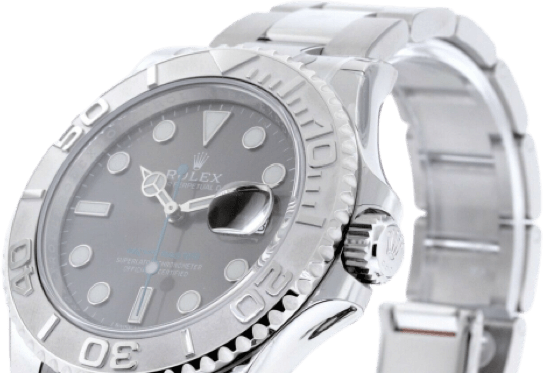
About Rolex
As the number one luxury watch brand in the world, Rolex watches are synonymous with prestige, impeccable quality and mechanical mastery. Established in 1905, the Swiss watchmaking giant has numerous icons to its name, ranging from classic dress watches to robust sports watches. Aside from being the top-selling watch brand at retail, used Rolex watches also dominate the secondary market, thanks to their value retention and collectability.
Rolex Facts
& Features
& Features
Although the features of vintage Rolex watches vary, all modern Rolex watches with Oyster cases share the following features:
- Made in Switzerland
- Minimum water-resistance to 100 meters (more for diving watches)
- Dial protected by scratch-resistant sapphire crystal
- Screw-down winding crown
- Powered by in-house made automatic movements
- Chronometer-certified by COSC
- Since 2015, accuracy ratings of -2/+2 seconds per day
If you've ever questioned why Rolex watches are so expensive, it ultimately comes down to the quality of materials, recognizable designs and practical features of these famous top-tier timepieces.
Rolex utilizes precious and proprietary metals to build their timepieces.
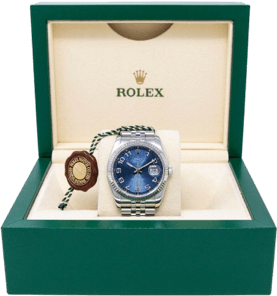
Oystersteel
This 904L stainless steel alloy highly resistant to corrosion.
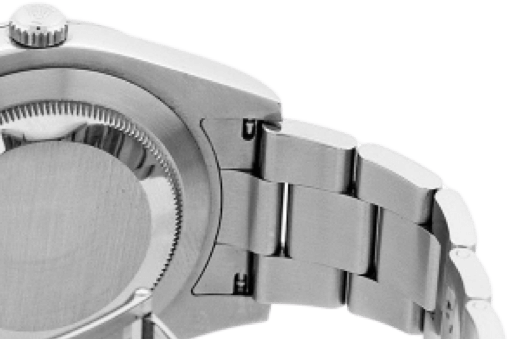
Gold
Rolex only uses 18k gold today (there are vintage Rolex watches in 14k gold) including yellow gold, white gold, and Everose gold—a proprietary rose gold alloy that is fade resistant.

Rolesor
These Rolex watches combine stainless steel and gold, commonly known as two-tone watches.
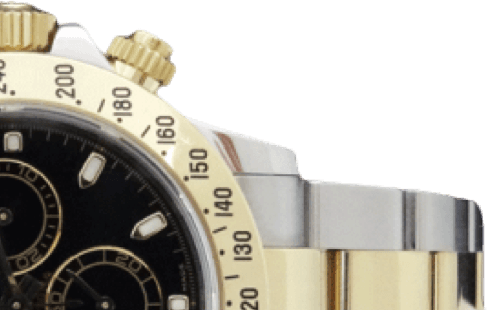
Platinum
Rolex only uses 950 platinum, which is comprised of 95% pure platinum.
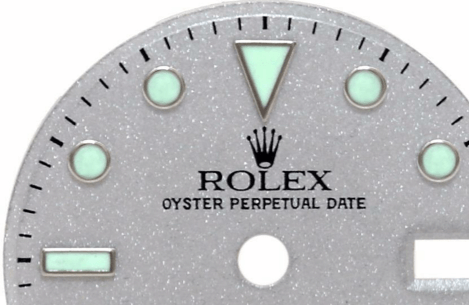
Rolesium
These Rolex watches combine stainless steel and platinum.
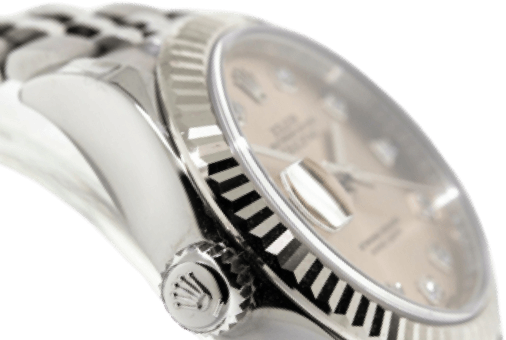
Cerachrom
Rolex uses this proprietary scratch and fade-resistant ceramic alloy for many of its sports watch bezels.

Top Models of New & Vintage Rolex Watches for Sale
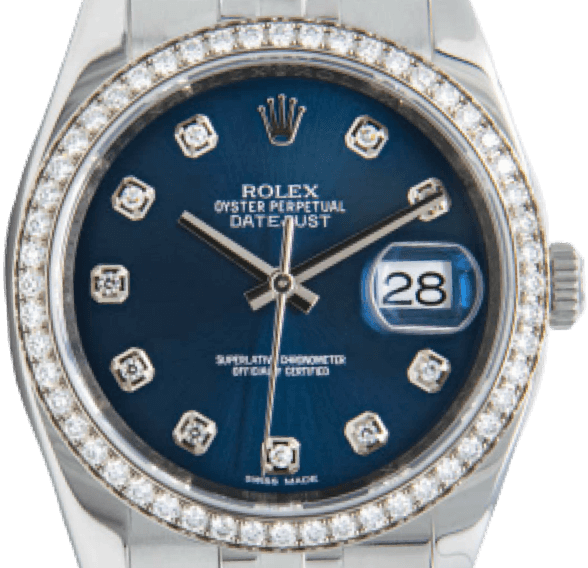
Rolex Oyster Perpetual
In 1926, Rolex unveiled the Oyster, the world’s first waterproof watch. Shortly after, Rolex announced the Perpetual movement in 1931, which was an automatic mechanical movement that uses a rotor for winding to eliminate the need for manual winding.
Rolex Oyster Perpetual models combine these two important innovations in a time-only watch. Although there are vintage Oyster Perpetual watches available in gold, modern versions are exclusively made in stainless steel and are priced as entry-level Rolex watches.
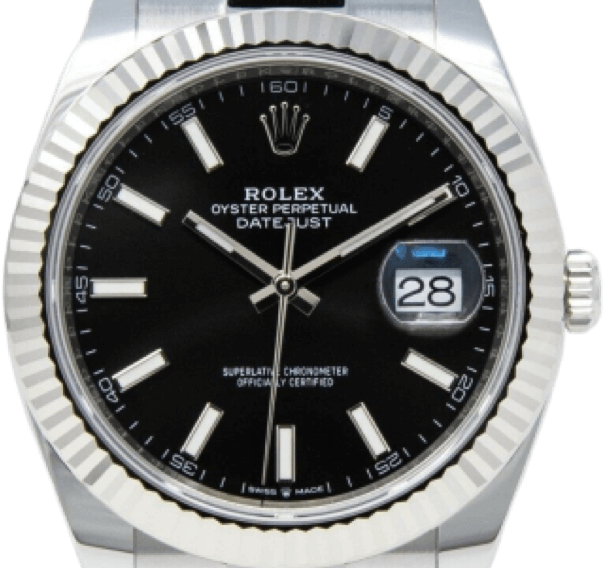
Rolex Datejust
To mark the brand’s 40th anniversary, Rolex introduced the Datejust watch in 1945 as the world’s first chronometer-certified wristwatch to include a date window on the dial. Over seven decades later, the Datejust continues as Rolex’s flagship watch model, available in a range of sizes for men and women. One of the most recognizable watch designs ever made, the Datejust is offered in an assortment of materials and can be paired with various bracelet, dial and bezel options.
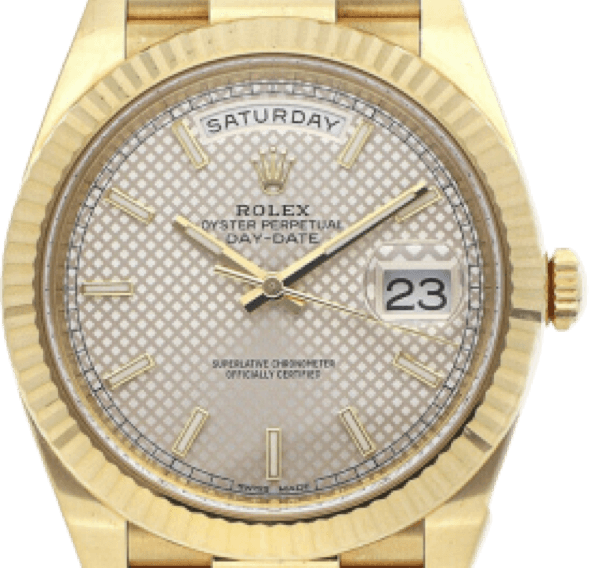
Rolex Day-Date
In 1956, Rolex announced the Day-Date watch featuring a dial with a duo of windows to indicate the day of the week and the date of the month. The then-new watch also debuted a novel bracelet design called the President bracelet, characterized by semi-circular links.
The Day-Date—or the Rolex President watch as it is now commonly called—is exclusively fashioned from precious metals such as gold or platinum and is considered Rolex’s most prestigious watch model.
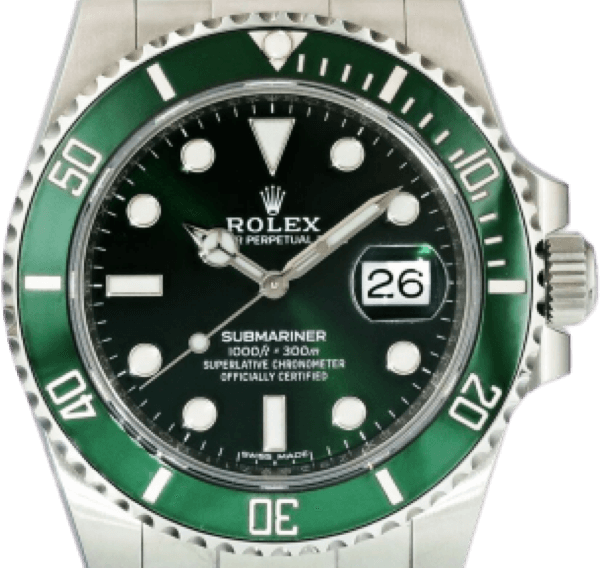
Rolex Submariner
In 1953, Rolex introduced the Submariner as the first diving watch that's waterproof to a depth of 100 meters. Created specifically as a tool watch for SCUBA divers of the era, the Submariner featured a rotating 60-minute bezel to track immersion times, and plenty of luminescence on the dial for legibility underwater.
Today, the Submariner is arguably the world’s most famous luxury dive watch, available in stainless steel, full gold and two-tone steel and gold editions. The demand for steel Submariners is so high that they typically sell above retail prices in the secondary market.
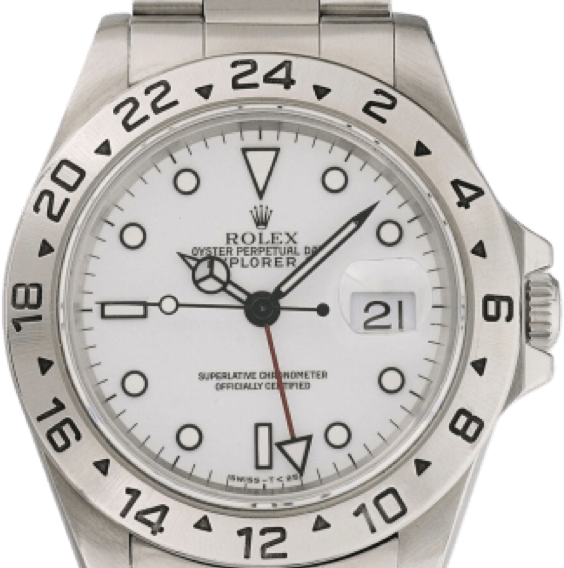
Rolex Explorer One and Two
After Edmund Hillary and Tenzing Norgay became the first men to reach the summit of Mount Everest in 1953, Rolex released the Explorer watch in their honor. Created as a simple yet durable watch for adventuring, the Rolex Explorer’s signature design traits are its stainless steel construction and its black time-only dial with Arabic numerals at 3, 6, and 9 o’clock.
In 1971, Rolex introduced the Explorer Two watch. Rather than a time-only model, the Explorer Two came fitted with a 24-hour marked bezel and an extra hand to differentiate between A.M. and P.M. hours. The Explorer Two evolved to become a dual time watch. It is currently one of Rolex’s most robust sports models.
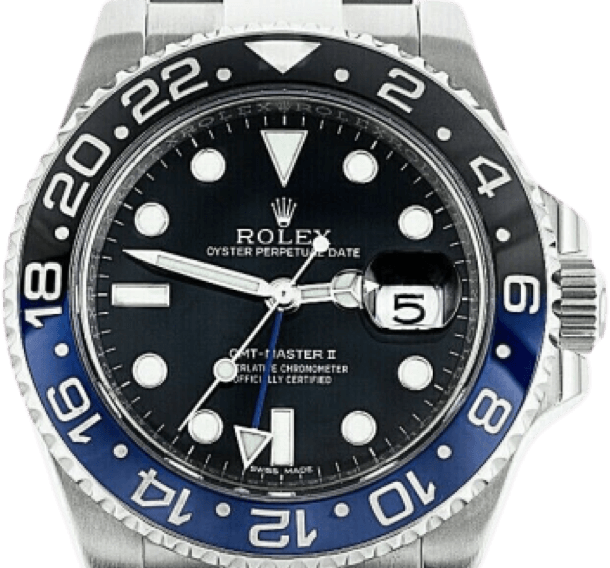
Rolex GMT-Master One and Two
In 1954, Rolex developed the GMT-Master watch specifically for Pan American World Airways pilots to keep track of two time zones simultaneously, thanks to a clever design that included a 24-hour marked rotating bezel and two hour hands on the dial.
The red and blue bezel of the first GMT-Master picked up the “Pepsi” nickname, and other bezel colors eventually joined, including the red and black “Coke” and the brown-toned “Root Beer.” The GMT-Master remains one of Rolex’s most popular sports watch models with current GMT-Master Two versions selling higher than retail prices in the pre-owned Rolex watch market.

Rolex Daytona
The Rolex Daytona chronograph was introduced in 1963. The first generation Daytona were manual-winding chronographs, which were replaced by automatic versions in 1988. However, those automatic Daytona models ran on Zenith base movements and Rolex ultimately replaced them with in-house made movements in 2000.
Vintage Daytonas are the most expensive Rolex watches for sale in the pre-owned Rolex market, particularly those with “Paul Newman” style dials. Modern Daytona watches are also famously difficult to get, due to their extraordinary demand. It is not uncommon to find the latest steel and ceramic versions selling for more than double their MSRPs.
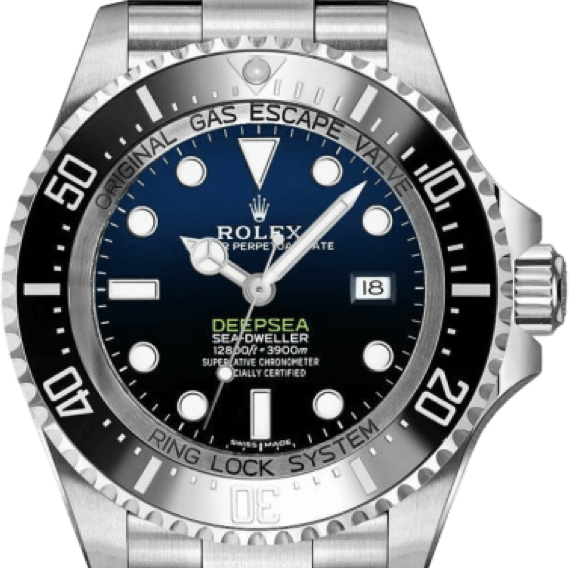
Rolex Sea-Dweller
The Sea-Dweller was launched in 1967 for saturation divers working for the engineering company COMEX. Featuring greater water resistance depths than the Submariner and a helium escape valve to release built-up gasses, the Sea-Dweller is Rolex’s heftiest diving watch model. The Deepsea is a special version of the Sea-Dweller, boasting an impressive water-resistance rating of 3,900 meters.
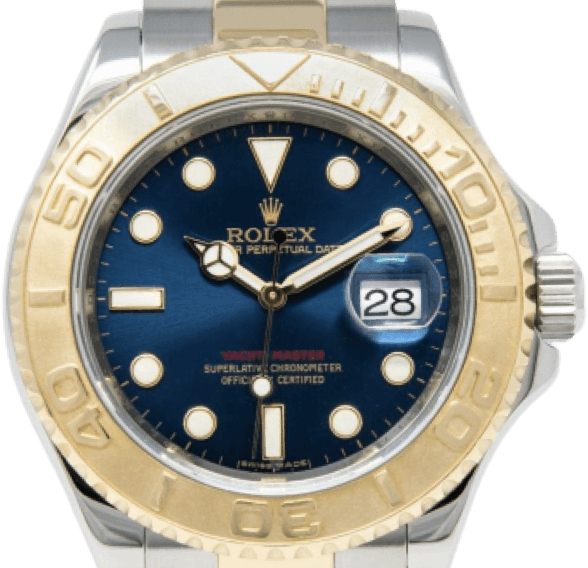
Yacht-Master One and Two
In 1992, Rolex released the Yacht-Master as an ultra-luxurious nautical-inspired watch featuring a rotating 60-minute timing bezel and time and date dial. The Yacht-Master is Rolex’s most varied sports watch collection, with a slew of sizes and materials available. The Yacht-Master Two is one of Rolex’s newest models, equipped with a complex regatta chronograph countdown function specifically designed for competitive sailing.






















































































